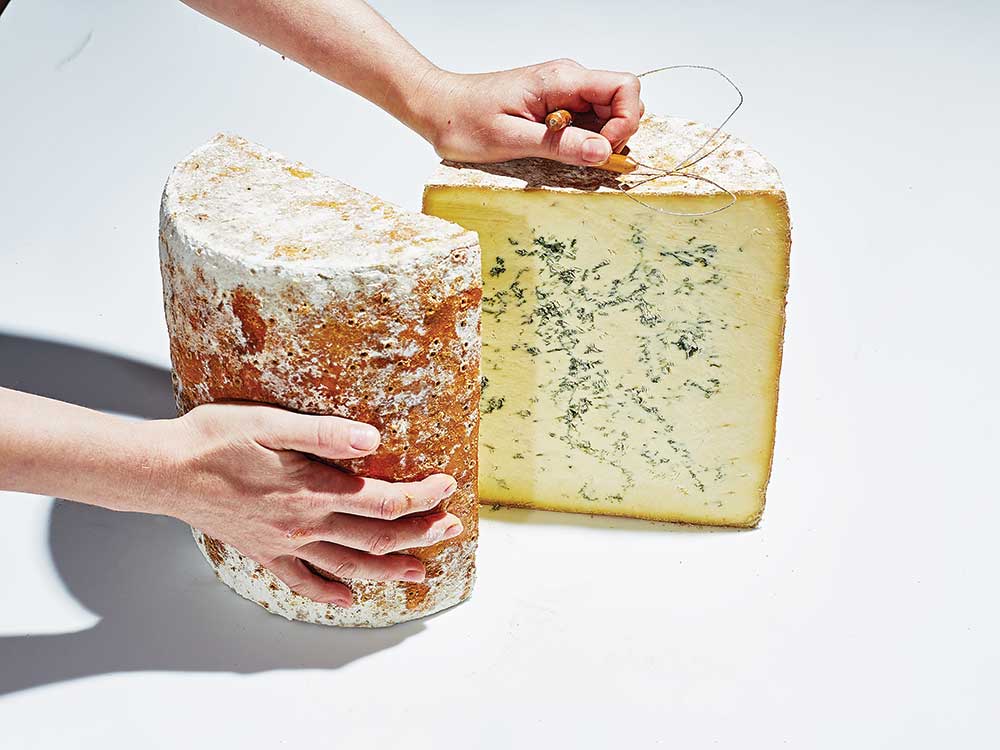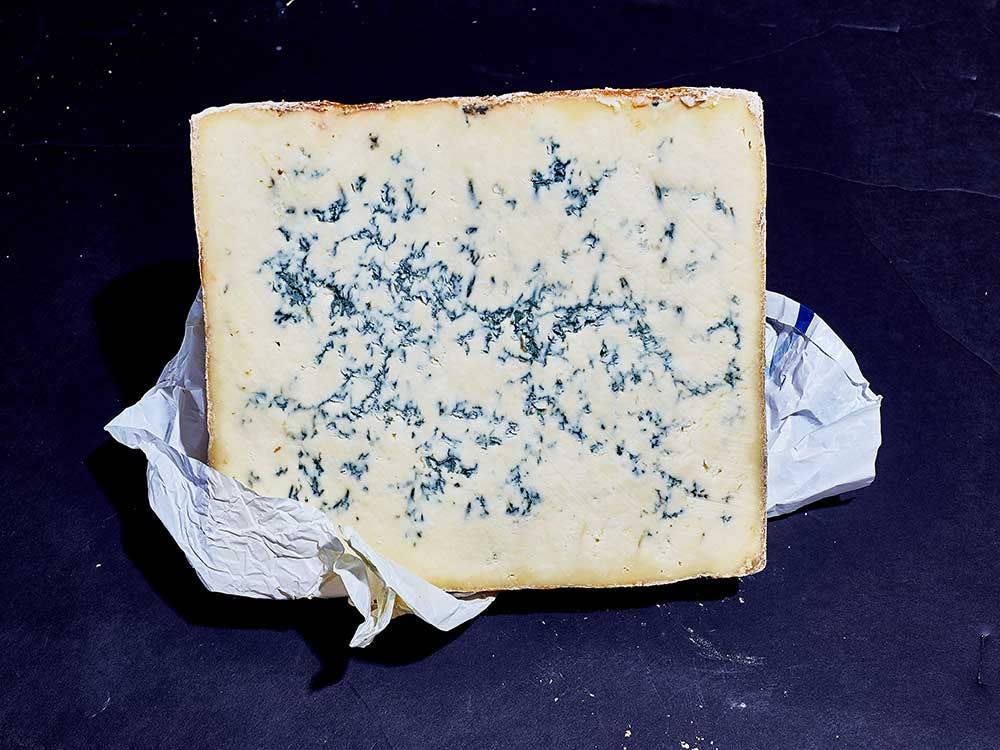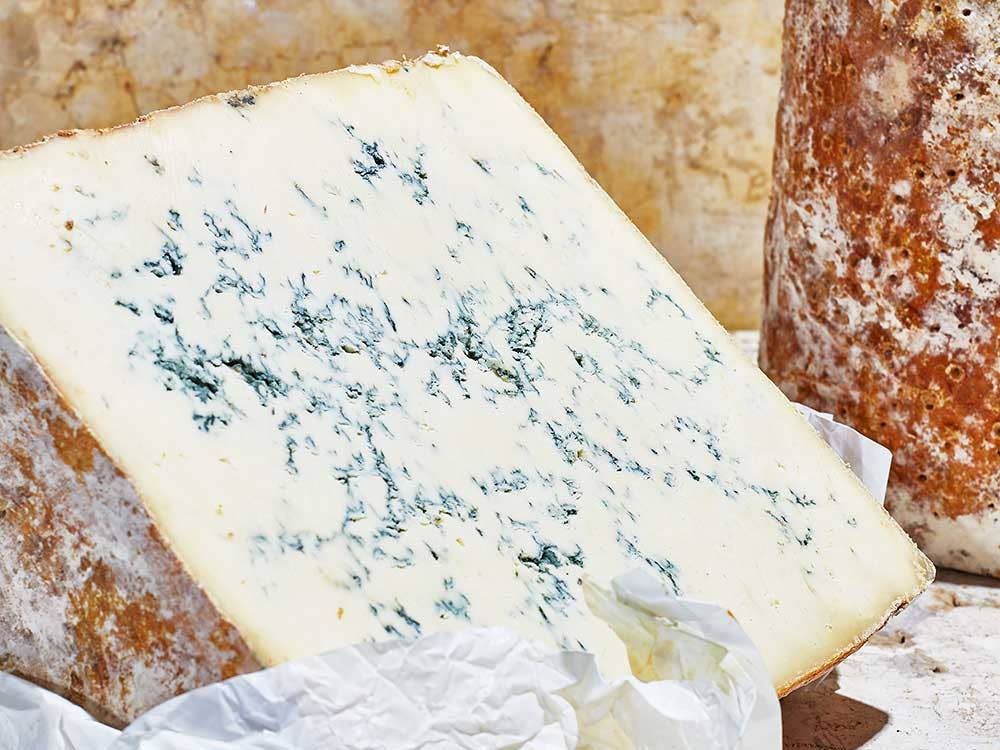
In Praise of Stilton, the Perfect Holiday Cheese
What to do with Britain’s big buttery blue wheel of funk
Stilton has been made since at least as far back as the 18th century, when it was available at a coach house along the Great North Road outside of London. The massive cheeses became a souvenir for people going into and out of the city and eventually one of England’s favorite holiday treats.
"The smell of Stilton is, for me, the smell of December," says Francis Percival, who lives above Neal's Yard Dairy, London's greatest cheese shop, where his wife, Bronwen, is the buyer. The Percivals, a cheese power couple, are the coauthors of Reinventing the Wheel, which makes a biological case for reviving prescientific cheesemaking methods and pays homage to the classic cheeses that have resisted the tide of industrialization in dairy farming.

Why Christmas?
Stilton has long been associated with the holidays. Wheels made from plentiful summer milk begin to ripen toward the end of fall and are at their peak throughout winter.
"But if you look back," Bronwen says, "people were eating this cheese aged for two years. At that point this whole seasonality thing kind of goes out the window. Back then, it was particularly suitable for festive occasions because it was expensive. People talked about it as the most rare, exotic, sought-after cheese available."
Earn Your Stripes
Slice into a 16-pound drum of Stilton and you’ll likely notice a few thick, straight veins of blue mold cutting through the otherwise lacy, creamy paste. These lines are the result of piercing the cheese with long needles to hasten mold growth and speed up the ripening process. Francis says piercing originated as a “shady, ungentlemanly” practice that was most likely not part of the original Stilton method.
Today, it is unusual to come across an unpierced wheel. The specimen above is from Colston Bassett, a small dairy that pierces less than the larger producers—the cheese has less veining and breakdown, and a creamier, smoother paste.

Full Size
The Percivals suggest buying freshly cut slices from a full-size wheel, rather than the petite 2-kilogram Stilton “truckles” or small crocks of potted Stilton that appear around the holidays.
“Put this down, signed by both of us: There is nothing worse than the idea that the potted Stilton is in some way a premium product,” says Francis. And with a smaller wheel, “you end up with a tremendous amount of rind to paste,” adds Bronwen. “They really dry out by the time they’re ripened, then they always tend to have this heavy, awkward texture and too much blue.”
What About Those Drips?
Stilton, like many blue cheeses, has a tendency to weep at room temperature; the liquid is normal, and even desirable, evidence that the cheese has been stored and aged properly. “It’s a protein syrup that is being released by the cheese as it is breaking down,” says Bronwen. “I really like that liquor; it means the cheeses are particularly succulent, and there’s a sweetness to it as well.”
In Good Company
The Percivals prefer to eat their Stilton at the end of a meal with a glass of something sweet. Tawny port is the classic accompaniment—there’s something alchemical about the combination of salt and sweetness—but Francis also suggests branching out into other fortified wines like madeira. Bronwen appreciates a well-aged barley wine, such as J.W. Lees Harvest Ale.
“This is the great thing about Christmas eating and drinking: It is an amazing opportunity to celebrate the eating habits of the 18th century,” says Francis. “I’m amazed anyone had any time for things like fighting then, because they must have all been blotto all the time. But if you want to serve some really sweet, high-alcohol wine at the end of the meal, then Stilton is absolutely the ideal accompaniment to it.”
Keep Reading
Continue to Next Story










